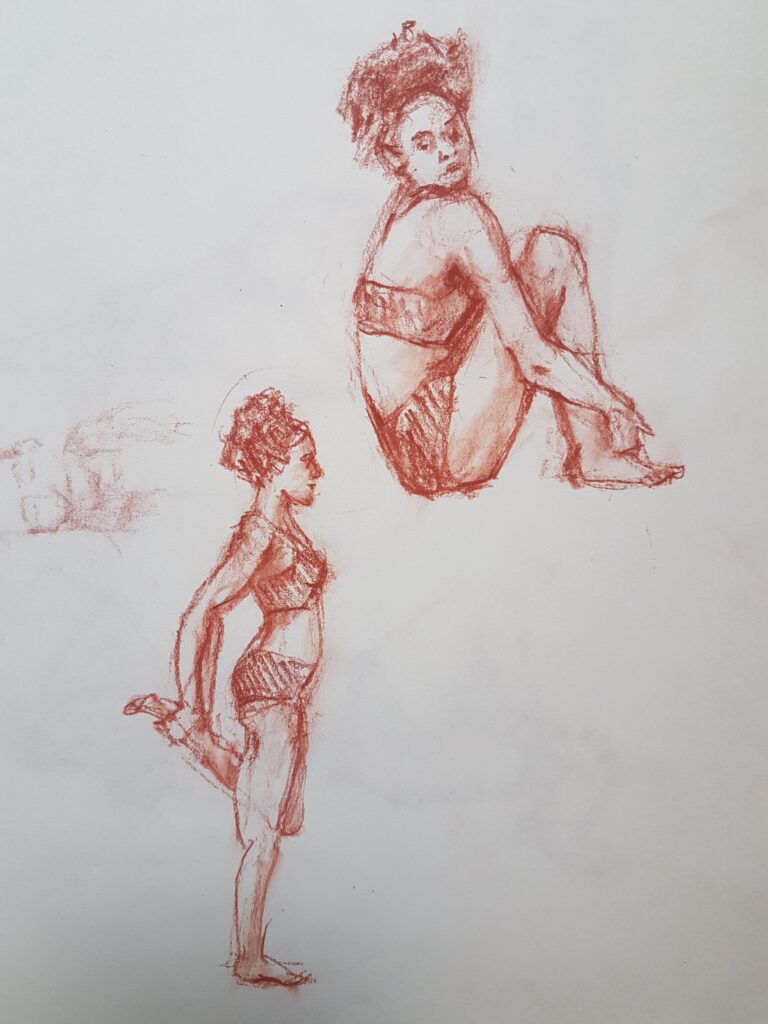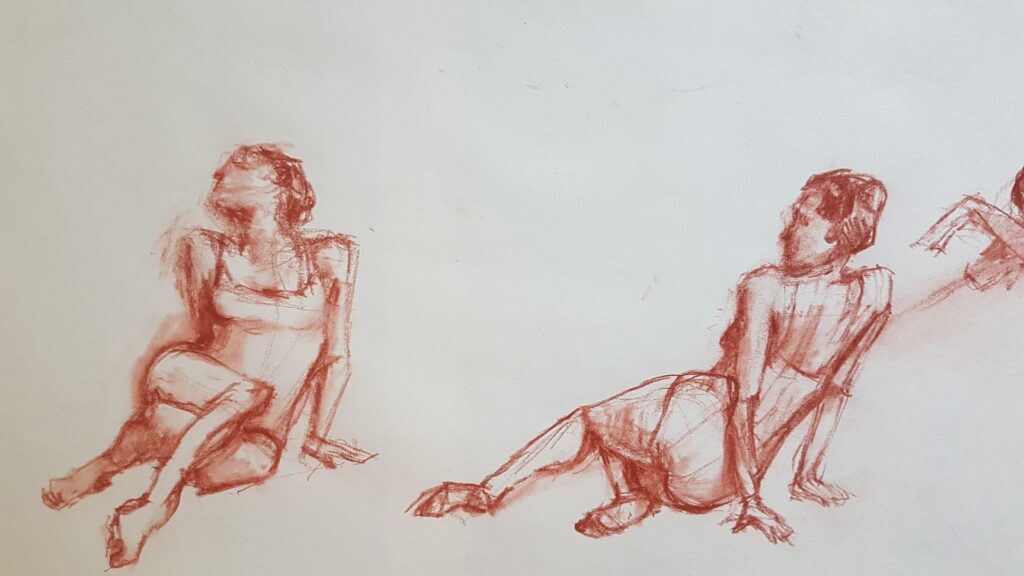Human Figure Drawing Done Naturally
Drawing the human figure naturally is a worthy pursuit! It combines technical precision with an intuitive grasp of anatomy and movement.
We must apply each side of our brain, right and left hemisphere. Or one could say our masculine side and our feminine side. If you haven’t developed some technical skills now is the time.
Although don’t fret, understanding basic proportions is all you need. Its necessary to have a basic foundation, then the magic can happen, the natural touch can now blossom on top of this initial structure.
This guide explores how to draw the human figure with natural fluidity and grace. As well as offering practical tips and techniques inspired by Life Drawers themselves.

2 Tips on How to Draw the Human Anatomy Naturally
1. Embracing the Natural Proportions of the Human Body
To draw the human figure naturally, it’s essential to understand and respect its inherent proportions and structure. Natural harmony (feminine) and dedication to anatomical accuracy (masculine) provide a strong foundation for capturing the essence of the human body.
- Proportions: Celebrate the harmony and balance found in nature. Apply this principle by studying and adhering to natural proportions—such as the head being roughly 1/8th of the total height of the body. This will help you create drawings that are not only accurate but also visually pleasing and harmonious. Practice, practice, practice.
- Study Anatomical Landmarks: Identify and familiarize yourself with key anatomical landmarks, such as the shoulders, hips, and joints. Understanding these points helps ensure that your drawings reflect the true structure and movement of the human body, enhancing the natural quality of your work.

2. Capturing Natural Movement with Dynamic Poses
To achieve naturalism in your figure drawings, focus on capturing the fluidity and dynamism of human movement.
- Gesture Drawing: Start with quick gesture drawings to capture the essence of movement and posture. These sketches should be fluid and spontaneous, focusing on the overall flow and rhythm of the figure rather than detailed anatomy. This approach helps in depicting natural, life-like poses.
- Observe and Reflect: Emphasize keen observation, closely study how people move in real life. Pay attention to the subtleties of muscle contraction and relaxation, the way weight shifts, and how different poses affect the body’s alignment. Incorporate these observations into your drawings to enhance their naturalness.

Commit to regular practice, go to your local life drawing classes and with thoughtful observation, you’ll soon find yourself adept at drawing the human form with natural fluidity and elegance.
Happy Drawing!